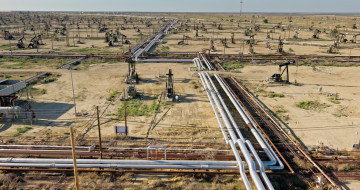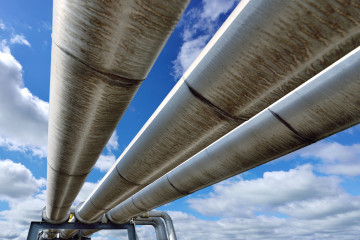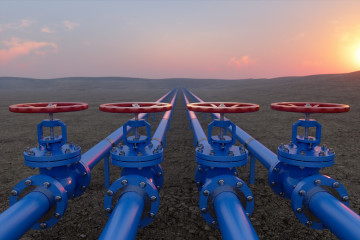Mergers and acquisitions in the energy sector represent significant opportunities for growth, but they also bring complex challenges. Amid the excitement of expanding your operations, one critical question demands attention: How do you bring newly acquired pipelines and facilities under the umbrella of your existing API RP 1173 Pipeline Safety Management System (PSMS)?
This is not just a compliance box to check. A well-integrated PSMS safeguards your people, protects the environment, and preserves the hard-earned reputation of your organization. Inadequate integration introduces risk, risk of incidents, regulatory scrutiny, operational disruption, and long-term liability.
Why Integration of New Assets Should Be a Priority
API RP 1173 was developed to provide a framework for managing pipeline safety through risk identification, prevention, and empowers operators to manage safety across the entire asset lifecycle.
Applying this framework consistently, especially to newly acquired assets, ensures a unified standard across your organization and prevents "blind spots" in your operations. Without proper integration, new facilities may operate in isolation, with outdated procedures, unclear responsibilities, or inconsistent expectations, all of which pose significant safety and compliance risks.
Starting with EHS Due Diligence
Successful integration begins before the acquisition is finalized. Pre-acquisition EHS due diligence is the first step toward understanding what you are buying, beyond just infrastructure and market share. It is about uncovering potential liabilities, assessing compliance histories, and evaluating the maturity of existing safety programs.
Gap Analysis
Once the deal is complete, the next critical move is a gap analysis, comparing the new facility’s safety culture, policies, and systems against your established PSMS. This is not just about documents. It is about how things are done on the ground.
Our teams typically conduct on-site evaluations, personnel interviews, and documentation reviews to understand where alignment exists and where it falls short. We assess key elements of RP 1173 such as leadership commitment, risk management, operational controls, incident investigation, and emergency preparedness. This analysis helps build a clear picture of what needs to change and what is already working well.
Developing a Realistic Integration Plan
Integration does not happen overnight. A phased, prioritized plan is crucial for managing expectations and allocating resources effectively.
Immediate safety-critical gaps should be addressed first, followed by efforts to harmonize systems, processes, and cultures over time. The plan should define clear timelines, assign internal owners for each part of the process, and identify where external support may be needed, whether in training, documentation, or technology integration. By mapping out the journey, you create accountability and avoid overwhelming teams on either side of the acquisition.
Implementation: Turning Plans into Action
With the plan in place, implementation begins, starting with aligning policies and procedures. Newly acquired assets often come with legacy documentation that does not meet your organization’s standards. Updating these materials to reflect your RP 1173 framework ensures consistency across the board.
Next, employee training and system integration are essential. Teams need to understand your safety philosophy, operational controls, and emergency protocols not just in theory, but in everyday practice. In many cases, this includes hands-on workshops and leadership coaching to help embed a proactive safety culture.
System integration follows. This could mean incorporating safety performance data from the new assets into your existing reporting structure or aligning audit and review processes. At the same time, any known gaps, whether environmental or procedural, should be actively addressed through remediation, upgrades, or other corrective actions.
Measuring Success: Verification and Continuous Improvement
Post-integration audits are essential for confirming that the new facility is operating in compliance with PSMS and your internal standards. These assessments offer a chance to validate progress, recalibrate as needed, and strengthen oversight.
Key performance indicators (KPIs) help monitor how the newly integrated assets are performing over time. Management reviews should be conducted regularly to assess effectiveness and drive continuous improvement, keeping your PSMS dynamic, relevant, and responsive to operational realities.
Avoiding Common Pitfalls
Integration is not without its challenges. Companies often underestimate how complex it is to align systems, cultures, and expectations. Communication breakdowns with newly acquired personnel can derail early progress. When resources are stretched thin, integration may be delayed or deprioritized, putting safety and compliance at risk.
Cultural alignment is also crucial. The best PSMS can fail if the people responsible for executing it do not feel ownership or understand its purpose. Lastly, it is a mistake to view RP 1173 as a static checklist. It is a living system that requires active management and engagement at all levels.
How Antea Group Supports Pipeline Operators
Antea Group has extensive experience helping energy companies manage the EHS complexities that come with mergers and acquisitions. Our services include:
- Strategic EHS due diligence to uncover risks and hidden value.
- Compliance audits and post-integration assessments to ensure alignment internal standards and process.
- Safety consulting to develop and deploy customized PSMS programs.
- Environmental remediation and incident management support for legacy issues.
What sets us apart is our business-focused approach. We understand that every acquisition is different and that success depends on blending technical rigor with operational practicality.
Final Thoughts
Integrating new assets into your PSMS is more than a task, it is a leadership opportunity. It demonstrates your commitment to safety, accountability, and operational excellence.
When approached with structure and intent, RP 1173 integration can turn a good acquisition into a great one, to enhance not only your portfolio but also your performance and reputation.
In fact, as RP 1173 continues to mature and is more commonly adopted across the industry, API staff have stated that they are “So proud to see industry coming together under Pipeline Safety Management Systems”
Do not let EHS integration be an afterthought.
Contact Antea Group today to ensure a seamless, complaint, and safe transition for your new pipeline facilities.
Want more news and insights like this?
Stay in the loop with our monthly e-newsletter, The New Leaf. We’re here to keep you informed, enlightened, and entertained with the latest in EHS and sustainability. Don’t miss out on the insights and stories that matter to you!✨ Ready to turn over a new leaf? Sign up now!
Have any questions?
Contact us to discuss your environment, health, safety, and sustainability needs today.






